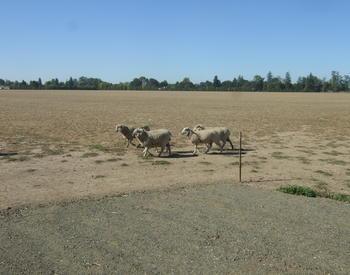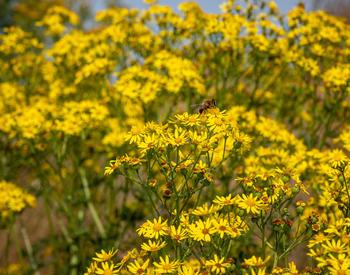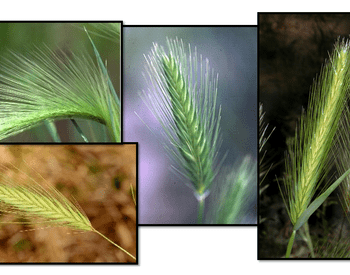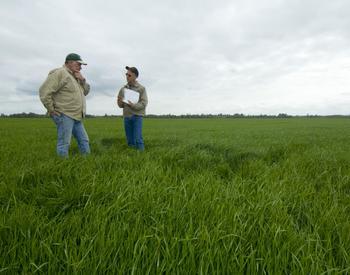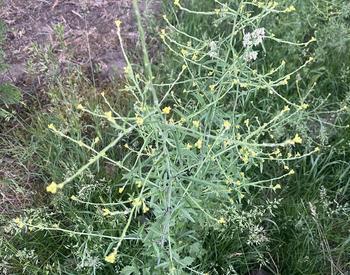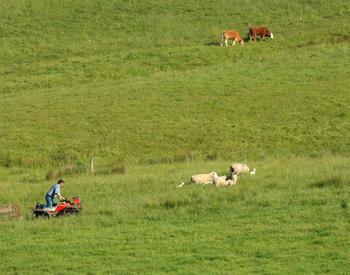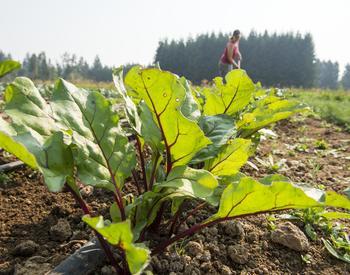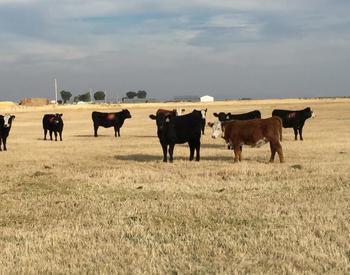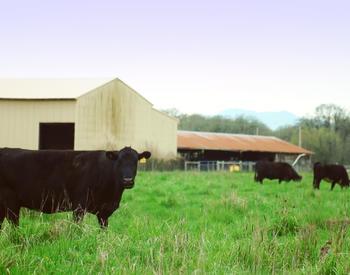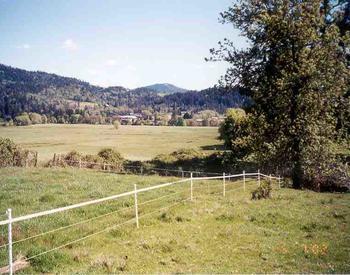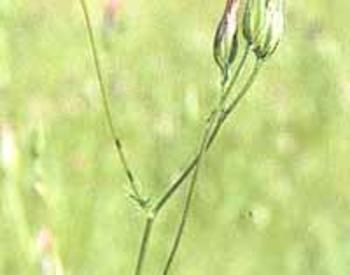Forages are a critical part of farming and ranching, and a large variety of grasses and legumes are available for planting in our fields. The more we know about these forages, the better we can choose what we grow and manage it for grazing livestock or hay production. Understanding scientific names botanists give plants can help us keep track of the different forages.
Plants have a three-part scientific name; the first part is the genus, the second is the species, and the third is the authority (the individual who first named the plant “scientifically”). The genus and species are in Latin and either italicized or underlined. The genus is capitalized and the species is not. An example of this is Perennial Ryegrass, which has the genus name of Lolium and the specific epithet (species) of perenne. The authority is Linnaeus (Carl von Linne), abbreviated L. The scientific name of Perennial Ryegrass is therefore Lolium perenne L. Notice we don’t have to use the Latin names; we can use the English names. The names are still genus and species, just more easily pronounced!
There are hierarchical levels of classification (ranks) above and below the genus and species, the most commonly referred to is the grouping of several genera (plural of genus) into a family. [The two most important forage plant families are grasses (Poaceae, formerly Grammineae) and legumes (Fabaceae, formerly Leguminosae).]
There are a number of levels of classification below that of species, with the most commonly used being subspecies and variety, abbreviated to 'subsp.', (or less usefully 'ssp.') and 'var.' respectively. These subdivisions, along with species, genera, families and other groupings or ranks within plant classification, are referred to as taxa (plural) or a taxon (singular).
Names for cultivars (= cultivated varieties) is dictated by another set of rules known as the International Code of Nomenclature for Cultivated Plants, the latest edition published in 2004.
Cultivar is a relatively modern term, coined by L.H. Bailey, derived from the term "cultivated variety". It is defined as an assemblage of cultivated plants which is clearly distinguished by one or more characters, and which when reproduced (sexually or asexually) retains its distinguishing characteristics.
There are single quotes on either side of the cultivar name, which in not italicized or underlined. At one time the term cultivar was abbreviated as cv. and a plant could also be named as shown below (single quotes deleted). However this is no longer a valid alternative.
In the 1960’s the Oregon Ag Experiment Station developed a cultivar still popular today called Linn Perennial Ryegrass (Lolium perenne L. 'Linn'). Many, many other cultivars of all the forages have been and continue to be developed by plant breeders around the Willamette Valley and other parts of the world.
When choosing forage, it is best to select one that matches your specific situation. Things to consider include where you want to grow the plants and intended use for the pasture or hay. Important site attributes to consider are things like water availability, soil type (drainage, depth, etc.), pH, and more. Intended use includes things like hay or pasture: That is, will it be harvested mechanically or will livestock graze it? Other important points to consider are the type of animal that will be grazing it (cattle, sheep, or horses) and the intended level of animal production (maintenance, finishing, or other).
The initial choice should be done on the genus and species level, as this is where most of the differences in growing conditions and management requirements exist. For example, orchardgrass (Dactylis glomerata) does best on well-drained soils of a moderate pH (6.0 or better). If soils are poorly drained and of a lower pH (5.5) the plants will not produce well and eventually die out. It would be better to grow tall fescue (Schedonorus arundinaceus Schreb.) there, which tolerates poor drainage and lower pH than orchardgrass. Additionally, palatability (acceptability) and fineness of leaves and nutrient content vary among the different forages.
For example, in general, livestock find orchardgrass and ryegrass more palatable than fescue and other grasses. Also, don't mix too many forage types together, as it complicates management. Rather, carefully match compatible types or make separate plantings in an alternate field. There are many other examples for site and use requirements of forages. It is important to study the characteristics of the different plants you want to grow, and make sure they match your situation (site characteristics and intended use and management).
Once you have made your choice of the type of forage you want to grow, you can fine tune that decision by selecting a specialized cultivar of the forage. Cultivars differ in several aspects. Most importantly, make sure you choose forage types and not turf types. There are not only yield differences between the two but also health issues (endophyte level). Next, choose cultivars based on different characteristics such as maturity date (early or late), winter hardiness level, disease resistance (nematode, stem rot, rust), etc. Variety testing is expensive and takes years to complete. Seed companies and breeders have websites and other information describing their different cultivars.
Don’t forget proper site preparation before you plant; including weed control, soil testing, and fertilizing according to the OSU Fertilizer Guides. There are several resources and forage meetings you can use to make your choices and guide you in field preparation and harvest management as your new forage grows.
Sources:
Australia’s Virtual Herbarium
Nutrient Management for Pastures: Western Oregon and Western Washington.
USDA NRCS - Plant Fact Sheets
Oregon Forages (OSU Extension Service)
Scientific Plant Names. Landscape Plants
USDA Plants Database
For Additional Information:
- MatchClover; Species Selection Tool. OSU Forage Information System
- Pasture and Grazing Management in the Northwest
- Species Selection. OSU Forage Information System
- Who's Coming to Dinner? OSU Forage Information System
